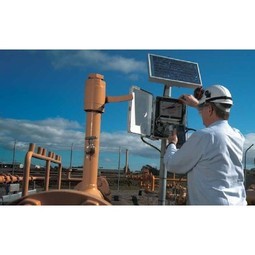Download PDF
Cleanaway's Transformation: Leveraging IoT for a Smarter and Cleaner Australia
Technology Category
- Analytics & Modeling - Machine Learning
- Sensors - GPS
Applicable Industries
- Recycling & Waste Management
- Utilities
Applicable Functions
- Maintenance
- Sales & Marketing
Use Cases
- Fleet Management
- Predictive Maintenance
Services
- Data Science Services
The Challenge
Cleanaway, Australia’s leading waste and recycling services provider, faced a significant challenge in managing data from its diverse operations. The company's operations, including waste collection, sorting, and logistics, involved different IT systems, leading to data being scattered across multiple, disjointed sources. This data sprawl was a major obstacle as the complexity and variability of Cleanaway’s services generated large volumes of operational and service data from various sources, including GPS and connected fleet systems, and structured and unstructured data from customer transactions, sales, marketing, and more. The company's ambition to become an efficient and profitable data-first business as part of its Blueprint 2030 objectives was hampered by these data silos, which impeded the sharing of actionable insights and resulted in unreliable insights due to inconsistent data quality.
About The Customer
Cleanaway is Australia’s leader in delivering efficient waste and recycling services daily to millions of households and facilities across the country. The company is committed to reducing the environmental impact of waste as part of its mission to provide a cleaner, safer planet for future generations. Cleanaway's diverse operations include waste collection, sorting, and logistics, and the company is dedicated to using data to support sustainable practices. As part of its Blueprint 2030 objectives, Cleanaway aims to become an efficient and profitable data-first business, leveraging data to drive responsive and well-informed decisions.
The Solution
To overcome these challenges, Cleanaway turned to Databricks to implement a lakehouse architecture that could function as a single source of truth by unifying disparate and siloed data sources. The Databricks Lakehouse was chosen for its strong reputation of unifying data silos at speed, scaling analytics and AI at cost, and providing exemplary technical support. The company was able to deploy Databricks Lakehouse on Azure quickly and easily, enabling it to roll out modern, automated use cases for business intelligence in less than a year at lower costs. Cleanaway operationalized its first advanced analytics and machine learning models using MLflow and Delta Lake together with Power BI to better analyze changes to business performance metrics and to leverage key insights to improve decision-making across all aspects of the business. One of its first models in production was used to assess and optimize the most efficient daily routes possible for Cleanaway’s fleet of over 2,800 solid waste services collection vehicles.
Operational Impact
Quantitative Benefit
Related Case Studies.

Case Study
IoT Solutions for Smart City | Internet of Things Case Study
There were several challenges faced: It is challenging to build an appliance that can withstand a wide range of voltage fluctuations from as low at 90v to as high as 320v. Since the device would be installed in remote locations, its resilience was of paramount importance. The device would have to deal with poor network coverage and have the ability to store and re-transmit data if networks were not available, which is often the case in rural India. The device could store up to 30 days of data.

Case Study
Automation of the Oguz-Gabala-Baku water pipeline, Azerbaijan
The Oguz-Gabala-Baku water pipeline project dates back to plans from the 1970’s. Baku’s growth was historically driven by the booming oil industry and required the import of drinking water from outside of the city. Before the construction of the pipeline, some 60 percent of the city’s households received water for only a few hours daily. After completion of the project, 75 percent of the two million Baku residents are now served around the clock with potable water, based on World Health Organization (WHO) standards. The 262-kilometer pipeline requires no pumping station, but uses the altitude differences between the Caucasian mountains and the capital to supply 432,000 m³/d to the Ceyranbatan water reservoir. To the people of Baku, the pipeline is “the most important project not only in 2010, but of the last 20 years.”

Case Study
GPRS Mobile Network for Smart Metering
Around the world, the electricity supply industry is turning to ‘smart’ meters to lower costs, reduce emissions and improve the management of customer supplies. Smart meters collect detailed consumption information and using this feedback consumers can better understand their energy usage which in turn enables them to modify their consumption to save money and help to cut carbon emissions. A smart meter can be defined in many ways, but generally includes an element of two-way communication between the household meter and the utility provider to efficiently collect detailed energy usage data. Some implementations include consumer feedback beyond the energy bill to include online web data, SMS text messages or an information display in consumers’ premises. Providing a cost-effective, reliable communications mechanism is one of the most challenging aspects of a smart meter implementation. In New Zealand, the utilities have embraced smart metering and designed cost effective ways for it to be implemented. The New Zealand government has encouraged such a move to smart metering by ensuring the energy legislation is consistent with the delivery of benefits to the consumer while allowing innovation in this area. On the ground, AMS is a leader in the deployment of smart metering and associated services. Several of New Zealand’s energy retailers were looking for smart metering services for their residential and small business customers which will eventually account for over 500,000 meters when the multi-year national deployment program is concluded. To respond to these requirements, AMS needed to put together a solution that included data communications between each meter and the central data collection point and the solution proposed by Vodafone satisfied that requirement.

Case Study
NB-IoT connected smart meters to improve gas metering in Shenzhen
Shenzhen Gas has a large fleet of existing gas meters, which are installed in a variety of hard to reach locations, such as indoors and underground, meaning that existing communications networks have struggled to maintain connectivity with all meters. The meter success rate is low, data transmissions are so far unstable and power consumption is too high. Against this background, Shenzhen Gas, China Telecom, Huawei, and Goldcard have jointly trialed NB-IoT gas meters to try and solve some of the challenges that the industry faces with today’s smart gas meters.

Case Study
OneWireless Enabled Performance Guarantee Test
Tata Power's power generation equipment OEMs (M/s BHEL) is required to provide all of the instrumentation and measurement devices for conducting performance guarantee and performance evaluation tests. M/s BHEL faced a number of specific challenges in conducting PG tests: employing high-accuracy digital communications for instrumentation, shortening setup and dismantling time, reducing hardware required, making portable instrument setup, avoiding temporary cabling work and the material waste costs

Case Study
British Gas Modernizes its Operations with Innovative Smart Metering Deployment
The UK government has mandated that smart meters are rolled out as standard across Great Britain by end of 2020, and this roll-out is estimated to create £14 billion in net benefits to the UK in consumer energy savings and lower energy generation demand, according to the Oxford Economics report, “The Value of Smart Metering to Great Britain.” While smart-metering systems have been deployed in many countries, the roll-out in Great Britain is unique because it is led by energy retailers, who have responsibility for the Electricity and Gas meters. The decision to have a retailer-led roll out was made by DECC (Department of Energy and Climate Change) to improve customer experience and drive consumer benefits. It has also led to some unique system-level requirements to support the unique local regulatory model.





